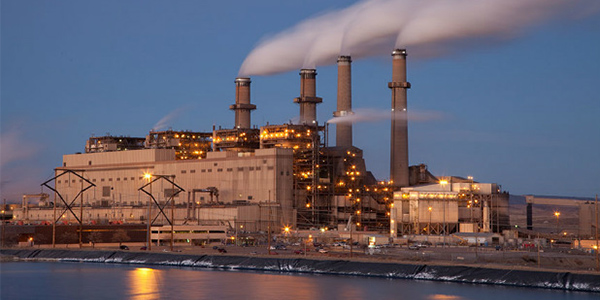Voters in New Mexico and Nevada will make major decisions on their states’ energy futures come Election Day in November.
In Nevada, a constitutional amendment on the ballot asks if the state should commit to a clean-energy future like its neighbors California, New Mexico and Washington.
In New Mexico, lawmakers placed a constitutional amendment on the ballot that would shake up the state’s Public Regulation Commission by letting the governor appoint three at-large members in place of the five members now elected by geographic district. Republican and Democratic lawmakers overwhelmingly backed the ballot measure, and Gov. Michelle Lujan Grisham (D) supports it.
Many elected officials were angry with PRC commissioners for what they called an attempt to skirt the state’s landmark 2019 Energy Transition Act (ETA), signed by Lujan Grisham, which requires the state’s investor-owned utilities to get all their electricity from carbon-free sources by 2045. (See New Mexico Moves Toward Clean Energy, EIM Participation.)
The bill also allows Public Service Company of New Mexico (PNM), the state’s largest utility, to issue $360 million in ratepayer-financed bonds to cover the costs of closing the coal-fired San Juan Generating Station by the end of 2022 and replacing its capacity. The bonds would also fund severance and job training programs for displaced workers, many of whom are Navajo.
The PRC decided to consider a part of PNM’s closure application in a proceeding that commenced before the law was passed, raising doubts about whether the ETA would apply. The state Supreme Court later reversed the decision, saying PNM’s application was filed after the governor signed the ETA and that the law must govern the PRC’s decision-making.
Two current members of the PRC also back the amendment, saying some of those elected to the PRC lack the backgrounds needed to understand and rule on complex regulatory issues.
“The public and the utility companies that serve them deserve to have commissioners with meaningful expertise when they begin working as commissioners,” Commissioners Cynthia Hall and Stephen Fischmann wrote in an editorial published in many of the state’s newspapers in March 2019. “That means graduate-level education plus significant industry or regulatory experience. Commissioners should be experts at the outset, not rookies.”
Other members of the PRC argue allowing the governor to appoint its members would deprive voters, especially those in rural disadvantaged communities, of the opportunity to influence ratemaking and policy decisions.
“There is no requirement for any sort of geographic representation, which makes it extremely likely that the commission would be dominated by members from the urban population centers rather than rural New Mexico,” Chair Theresa Becenti-Aguilar and Vice Chair Jefferson Byrd wrote in an editorial published by the Associated Press the same month as Hall and Fischmann’s. “It is also likely that the ethnic and racial diversity of the PRC would be reduced along with the geographic diversity.”
The commission recently voted to replace Becenti-Aguilar as chair of the PRC with Fischmann.
Nevada Clean Energy
The vote coming up in Nevada is the second time residents have been asked whether the state should make clean-energy goals a part of its constitution.
Nevada already has a law, SB 358, signed by Gov. Steve Sisolak in April 2019, that requires the state to get half its electricity from non-carbon-emitting resources by 2030, but environmentalists worry the law could be overturned by elected officials if the political winds shift. They want to enshrine the 50%-by-2030 goal in the state constitution.
In 2018, voters approved the renewable energy mandates in the form of Question 6, with about 59% in favor, the Nevada Secretary of State’s office reported. (See High Failure Rate for Western Ballaot Measures.)
That effort, like the current one, was bankrolled by California billionaire activist Tom Steyer.
However, amendments to the state constitution in Nevada must be approved in two consecutive elections, so the ballot measure, again called Question 6, will be taken up for a final vote this year.



